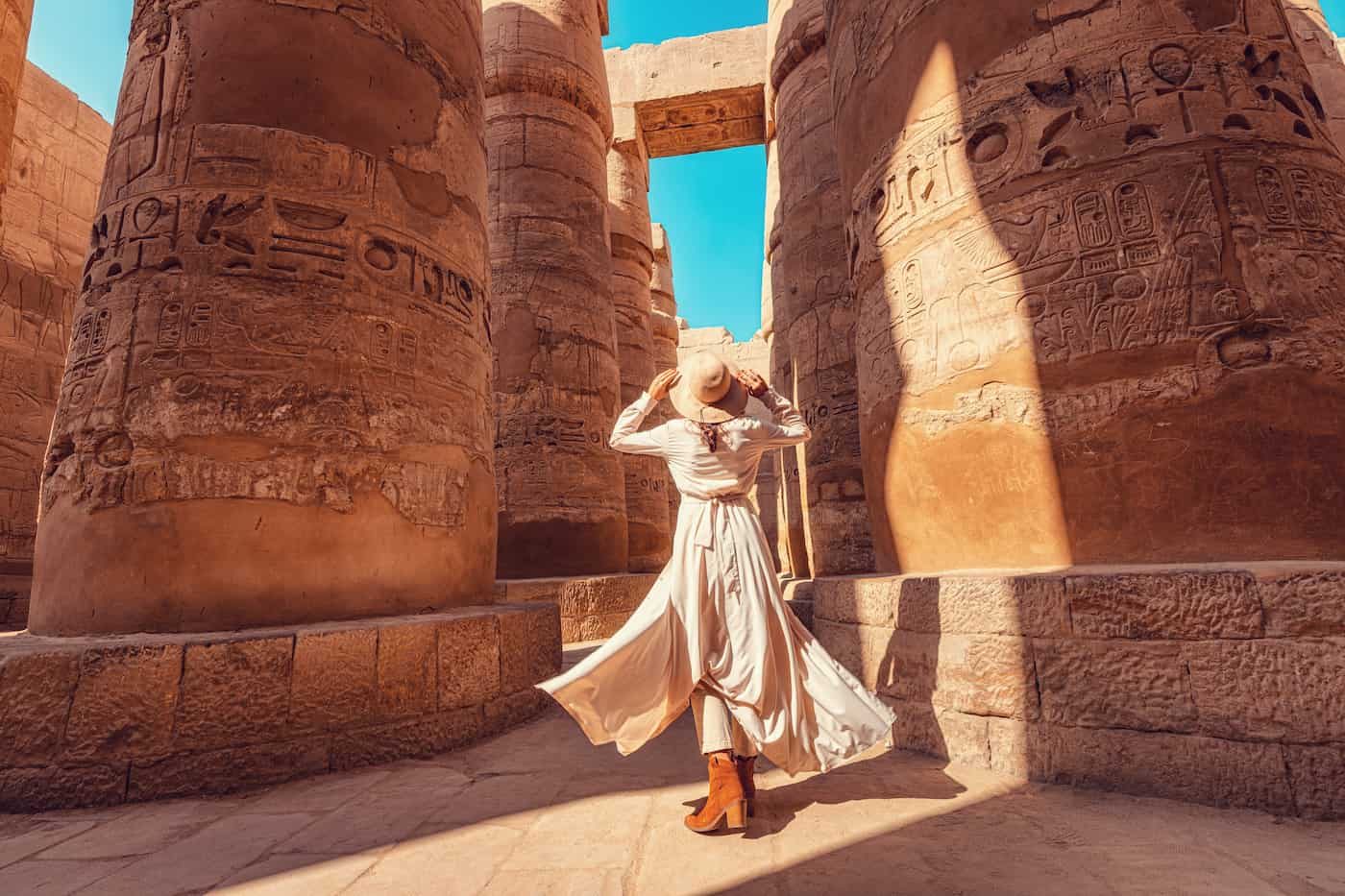Narmer of Egypt| First Dynasty, Facts, Palette & First Rule of Egypt
Narmer stands as the most significant figure from Egypt’s ancient past because of his historical importance. According to ancient historians, Narmer ruled as the pharaoh who brought Upper and Lower Egypt together in 3100 BCE, which marked the beginning of the First Dynasty and the Early Dynastic Period.
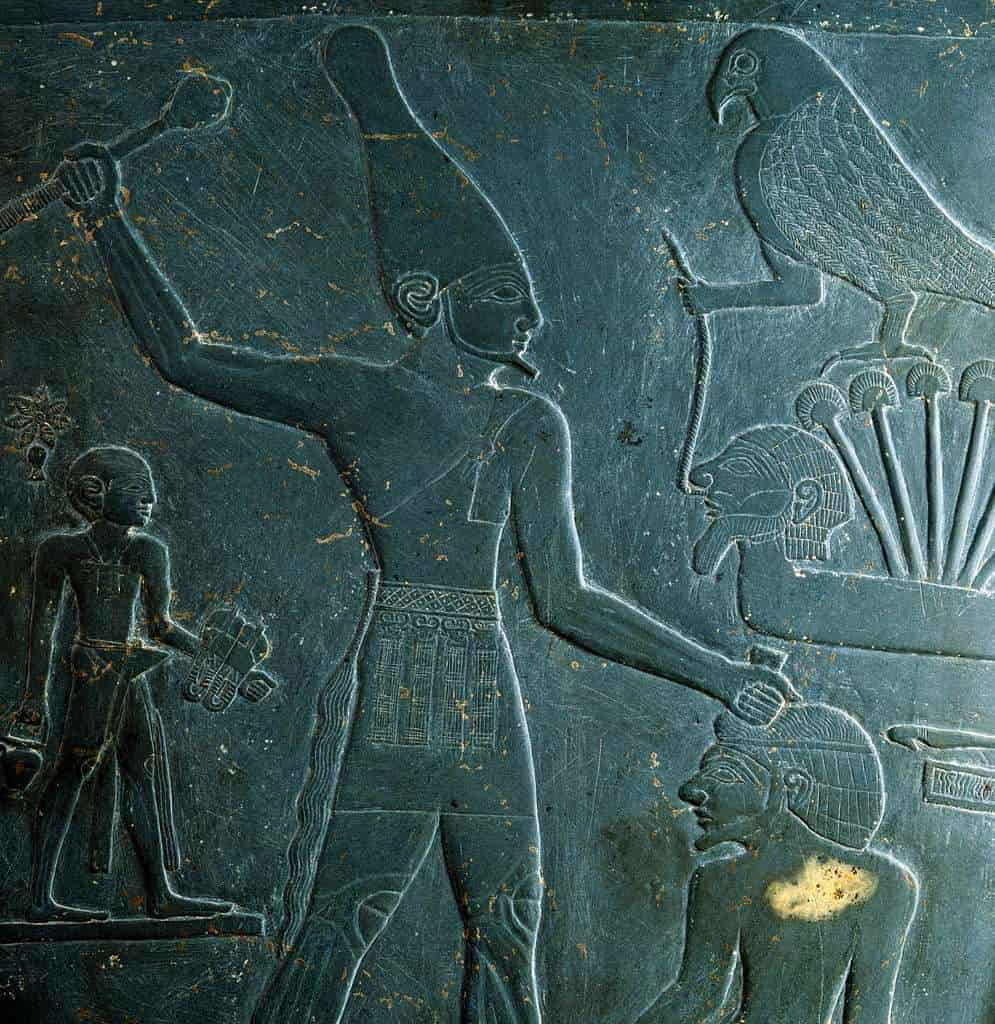
King Narmer Egypt
The Narmer Palette, along with other ancient artifacts, demonstrates how his reign and military achievements, and his crucial role in developing ancient Egyptian civilization. Through his unification of Egypt and establishment of a royal system, Narmer created the foundation of the First Great Empire, which remains vital for understanding Egyptian history.
When Was Narmer Egypt Born?
Narmer emerged as the first significant figure in ancient Egypt during 3270 BCE when the Nile Valley underwent significant transformations. The historians identify this time as Naqada III, which marks the final stage of the Predynastic Period before Egypt transitioned from tribal to centralized governance.
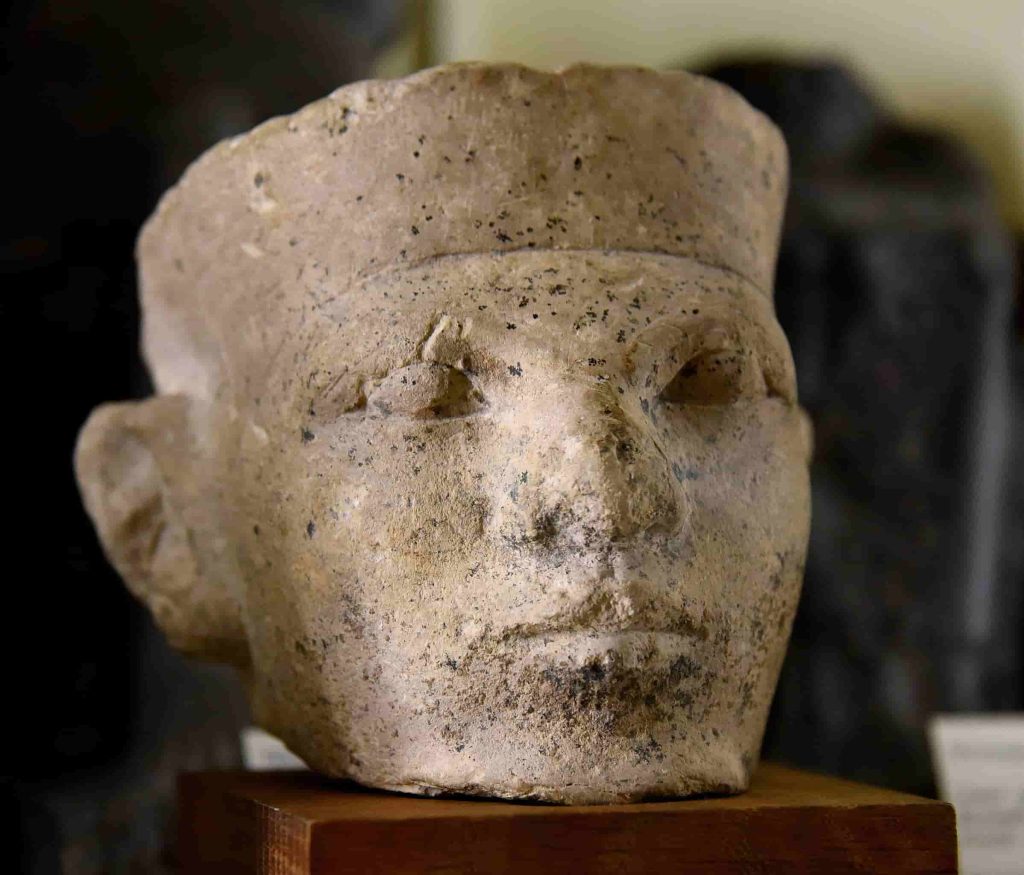
Mena Face
Archaeologists and Egyptologists have used artifact analysis and burial site examination, and early inscriptions to determine Narmer’s life span despite the absence of prehistoric birth records. The evidence shows that Narmer lived during the pivotal time that marked the transition from prehistoric to dynastic periods. Scholars have determined that Narmer ruled Egypt from approximately 3150 to 3100 BC, thus indicating his birth occurred in Upper Egypt several decades before his reign.
Historians agree that Hierakonpolis (ancient Nekhen) in southern Egypt served as Narmer’s birthplace because this area maintained its position as the main cultural and political center during the late Predynastic Period. During this period, Hierakonpolis served as a major cultural center that displayed large ceremonial structures and elite tombs together with early symbols of kingship, thus making it a strong candidate for the birthplace of Egypt’s first unifying king.
The time when Narmer emerged into power saw growing social structures and writing system progress along with extensive architectural development. The dynamic environment where Narmer grew up probably developed his skills to lead military battles while uniting power, which became the foundation for Egypt’s First Dynasty. The consensus among historians places Narmer’s birth at 3270 BCE to a ruling family within Upper Egypt’s final Predynastic era. His birth started a historical path that reshaped both Egyptian and worldwide history forever
Narmer Egypt Family Tree

King Mena The Unifier of Egypt
Arogists have reconstructed Narmer’s family tree through temple reliefs and royal inscriptions and tomb discoveries, although his family records remain less detailed than those of subsequent pharaohs. Narmer ruled as the first king of unified Egypt during Dynasty 1, which began around 3150 BCE.chaeol.
Who Were Narmer’s Parents?
The historian wearing the White Crown of Upper Egypt. The discovery of the White Crown on Scorpion Macehead supports the notion that Narmer received his power from existing Upper Egyptian royal dynasties, which fought for control.
The pottery shards from Abydos reveal the name of Ka (or Sekhen), who was possibly Narmer’s father or close relative, thus making Narmer the final ruler who united various Upper Egyptian territories.
al records lack direct evidence about Narmer’s parents, but most scholars think Scorpion II ruled Upper Egypt before Narmer and possibly served as his father. The Scorpion Macehead artifact discovered in Hierakonpolis depicts the Scorpion
Narmer’s Queen: Neithhotep
Historical records indicate Neithhotep served as Narmer’s queen while possibly giving birth to his successor Hor-Aha. The royal tomb at Naqada holds the distinction of being the largest in the region while displaying royal inscriptions. Through their marriage, Narmer united Upper Egypt with Lower Egypt, while Neithhotep likely originated from Lower Egypt.
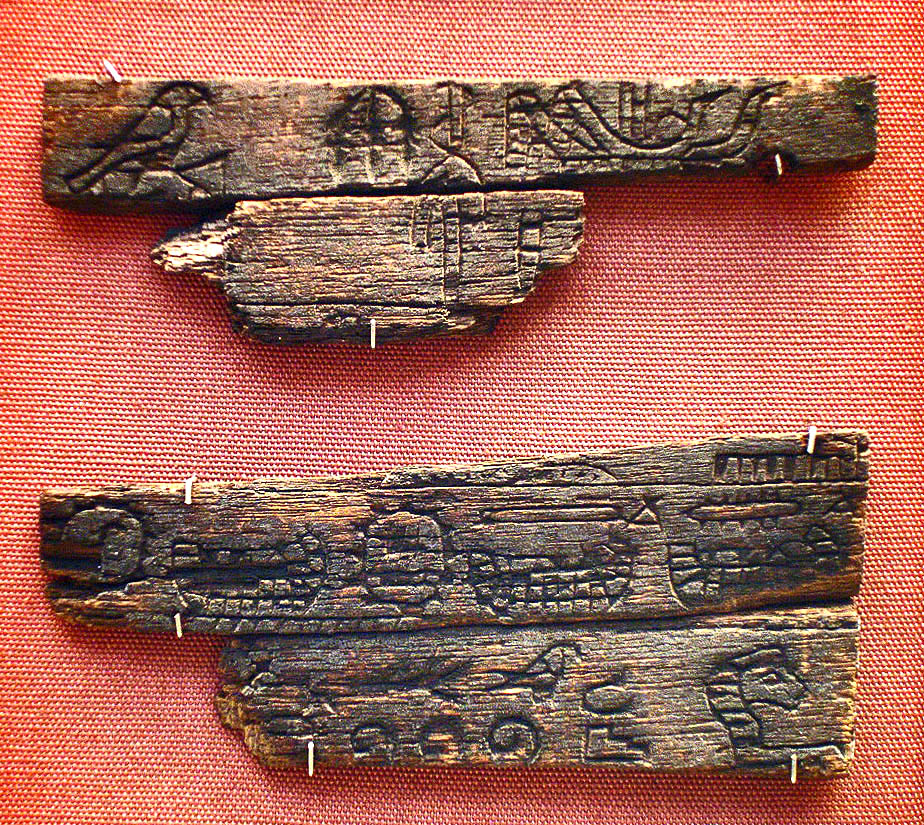
Fragmented ebony label of Hor Aha
The royal name Neithhotep signifies ”Neith is satisfied” because Neith was a goddess who received worship in Lower Egypt. Early dynastic politics used marriage alliances to form political agreements, which this name demonstrates.
Narmer’s Son: Hor-Aha
The first pharaoh who ruled a completely unified Egypt under the title “King of Upper and Lower Egypt” was Hor-Aha, who was likely the son of Narmer. Hor-Aha built on his father’s achievements by improving administrative systems and constructing temples, and possibly establishing the city of Memphis.
The historical records of Hor-Aha’s reign show better documentation than those of Narmer, yet he ruled because of his father’s established legacy.
Narmer’s Family Tree:
- Possible Father: Scorpion II or Ka
- Queen: Neithhotep (possibly from Lower Egypt)
- Son: Hor-Aha (his successor, considered Pharaoh of the First Dynasty)
The family tree of Narmer reveals the dynastic evolution that resulted in the emergence of one of ancient history’s most influential civilizations despite scarce documentation.
When Did Narmer Egypt Rule Egypt?
The research suggests that Narmer took the throne approximately at 3150 BCE when the First Dynasty of ancient Egypt was beginning. During this period, Egypt entered a crucial phase because different territories began to submit to a single dominant authority. The start of dynastic Egypt occurred during Narmer’s reign, which would extend for over 3000 years.
Early Dynastic Egypt
The Egyptian territory consisted of two major parts before Narmer came to power:
- Upper Egypt (the southern part, upstream along the Nile)
- Lower Egypt (the northern part, including the Nile Delta)
The two areas operated independently because they used distinct royal symbols and wore different royal headpieces. Kings from both Upper and Lower Egypt fought for control for multiple years. The historian describes Narmer as the leader who successfully united Upper and Lower Egypt in what is now known as the Unification of Egypt.
Timeline and Dating Challenges
The ancient Egyptians lacked our modern numbered year system, which makes it difficult to accurately determine the time Narmer ruled. The royal dynasty used the length of each ruler’s reign to measure time. Scholars use the following evidence to estimate the duration of Narmer’s reign:
- Archaeological finds like the Narmer Palette
- Tomb inscriptions in Abydos and Hierakonpolis
- Artifacts linking him to later rulers
Most historians agree that Narmer ruled during the transition between the Protodynastic Period and Early Dynastic Period, starting at 3150 BCE or possibly earlier.
Length of Narmer’s Reign
The duration of Narmer’s reign remains unknown to historians. A duration of 20 to 30 years is proposed for his rule, which would have allowed him to:
- Complete the unification of Egypt
- Establish a central government
- Launch early, building projects
- Pass power peacefully to his son, Hor-Aha
Key Achievements During His Rule
- United Upper and Lower Egypt
- Established Memphis as a potential administrative capital
- Laid the foundation for dynastic traditions that lasted centuries
- The pharaoh established himself as the ruler who controlled the entire land of Egypt.
What Is Narmer Egypt Best Known For?
The Egyptian people recognize Narmer as the first ruler who established the First Dynasty and united Upper and Lower Egypt into one country. Egyptian history shows him as the vital figure who led the country from various tribal regions to a powerful state under pharaoh rule.
The Unification of Egypt
The history books remember Narmer most for his unification of Upper and Lower Egypt by uniting the white crown of Upper Egypt with the red crown of Lower Egypt. His legendary status emerged from unifying Upper and Lower Egypt, which became the base for the future thirty dynasties.
Ancient artifacts, including the Narmer Palette, depict him as the ruler who holds both the red and white crowns, which serve as a representation of his unification achievement. The unification brought people under a single identity while strengthening political authority.
Founding of Dynastic Egypt
Narmer’s unification of the two regions led to the birth of dynastic Egypt, which would become one of the longest-running civilizations in world history. Narmer became the initial ruler of the First Dynasty while accomplishing the following actions:
- Established a new capital (possibly at Memphis)
- Built early institutions for religion, trade, and government
- Set the tone for the pharaoh as both divine ruler and warrior king
Military Leadership
Narmer is also remembered for his military power. The Narmer Palette shows Narmer both defeating enemies while displaying his conquered foes, thus demonstrating warfare’s essential position in his reign. The pharaohs maintained this warrior-king image as their standard representation throughout the centuries.
Religious Significance
The political and military achievements of Narmer might have been connected to his role in developing early religious traditions. Some scholars propose that he contributed to:
- He promoted the worship of Horus as the falcon deity who represents kingship.
- The tradition of temple construction started under his rule.
- The pharaoh gained divine status, which became the fundamental doctrine of Egyptian religion.
Cultural Legacy
Narmer established the model that future pharaohs would emulate throughout their reigns. Three thousand years after his reign, Egyptian kings maintained the practice of wearing dual crowns and displaying themselves as unifiers who fought battles. Through his actions, Narmer established a royal model that became the standard for all Egyptian kings to follow.
The Narmer Egypt Palette
The Narmer Palette stands as the most vital archaeological discovery from Egyptian history. Through its carved ceremonial structure, the artifact provides unique access to both the formation of the Egyptian state and the life story and ruling power of Narmer.

Narmer Palette, Egypt
What Is the King Narmer Palette?
Archaeologists discovered the Narmer Palette as a massive flat green schist stone measuring 64 cm (25 inches) in height within Hierakonpolis ancient city. The stone dates to 3100 BCE, which matches the time Narmer ruled Egypt. The artifact features complex carvings on both surfaces that use images and symbols instead of written text.
Unlike most palettes used for grinding cosmetics, the Narmer Palette was ceremonial. Temple service was likely its purpose since the artifact did not serve personal needs but functioned as an offering to deities.
Why Is the King Narmer Palette Important?
The Narmer Palette serves as an essential artifact for studying how Egypt became unified. The palette displays Narmer wearing both the Upper Egyptian white crown and Lower Egyptian red crown, which confirms his rule over both domains. The Narmer Palette represents the earliest documented visual evidence of the unification of Egypt.
The artifact stands as one of the first examples of Egyptian hieroglyphic writing, although its symbols have not yet developed into modern hieroglyphs.
What Does the King Narmer Palette Symbolize?
The Narmer Palette displays various symbolic artistic elements and messages.
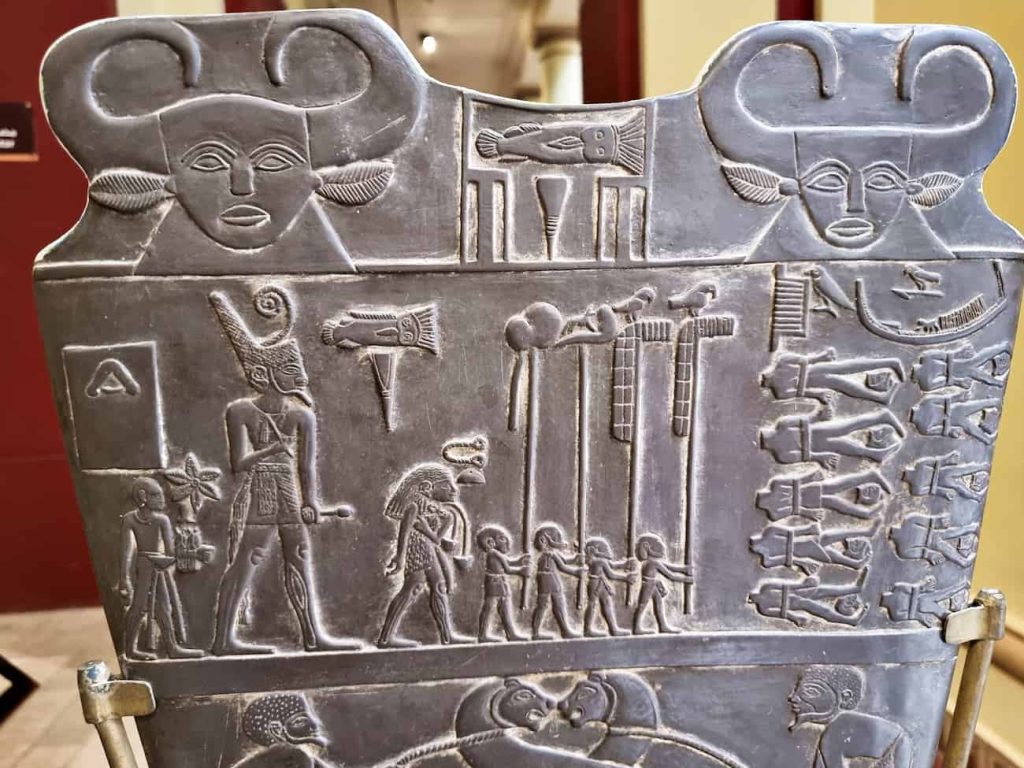
The Narmer Palette
- The depiction of Narmer crushing an enemy’s head serves as a symbol of his military victories.
- A sequence of defeated enemies appears below the images, which demonstrates the domination over conquered territories.
- The two long-necked animals twisting together in a scene depict the joining of two lands, according to researchers.
- Narmer appears as a tall, composed figure, while his enemies appear as small, disordered figures to demonstrate his divine authority to rule.
What Was the King Narmer Palette Used For?
The object maintains the appearance of makeup palettes but functions as something different from cosmetics. Scholars believe it had religious and political purposes:
- The artifact potentially served as a sacred temple donation.
- The artifact functioned as royal propaganda through which Narmer showcased his military prowess and received divine validation.
- The artifact could have functioned during ceremonial rituals that depicted or simulated the unification of Egypt.
Today, the Narmer Palette serves as a major attraction at the Egyptian Museum in Cairo, where visitors and researchers continue to show great interest.
The Narmer Dynasty — Egypt’s First Royal Line
Narmer receives historical credit for establishing Egypt’s First Dynasty, which marked a pivotal point in ancient historical development. The unification of Upper and Lower Egypt initiated dynastic rule, which created a single kingdom from previously scattered communities.
What Was the King Narmer Dynasty?
Historians identify the royal lineage of Narmer as the First Dynasty of Egypt. The First Dynasty controlled Egypt throughout the Early Dynastic Period, which lasted from 3100 BCE until 2890 BCE. The Early Dynastic Period saw Egypt become its first unified state under royal family rule, which established all future pharaonic rule.
.
The First Dynasty brought:
- A centralized government based in Memphis.
- The administration evolved with new tax systems and labor management structures, and record-keeping methods.
- The monumental architecture spread through the construction of temples and royal tombs.
- Strong use of iconography, such as the crowns, scepters, and falcons that symbolized royal power.
The traditions established by Narmer during his rule continued under the following successors.
Who Ruled After Narmer?
Most historians agree that Hor-Aha (also called Aha or Horus-Aha) became the direct successor of Narmer, possibly through a familial relationship. During his rule, Aha expanded the kingdom by constructing one of the first royal tombs at Abydos.
- Djer
- Djet
- Den
- Merneith (possibly one of the first female rulers in Egyptian history)
- Qa’a
Each ruler in the dynasty worked to advance the new nation by securing Egyptian borders and creating diplomatic relationships through trade or military conquest with neighboring regions.
The Significance of the First Dynasty
The Narmer Dynasty established the base that supported the following thirty dynasties to rule Egypt throughout three millennia. The unification of Egypt by Narmer made possible the construction of pyramids and the Valley of the Kings, as well as the rise of famous leaders such as Ramses II and Cleopatra.
This dynasty:
- A monarchy based on religion experienced stability.
- The pharaoh used divine kingship to establish connections with Horus and other divine beings.
- The establishment of mummification, together with tomb construction and religious rituals, became possible.
- The dynasty started written records by using early hieroglyphs to write on pottery seals and stone objects.
Legacy of Narmer’s Royal House
The First Dynasty created a basic system of order, although it did not build impressive pyramid structures or grand temples. The First Dynasty of Narmer transformed tribal groups into a centralized state, which served as the model for future dynasties that ruled for thousands of years.
How Did Narmer Die? Unraveling a Pharaoh’s Final Days
The death of Narmer, like many events from Egypt’s early dynastic period, is clouded in mystery. While we know a great deal about his role in unifying Egypt, details about how Narmer died are scarce—and mostly speculative. Still, archaeologists and historians have pieced together some theories based on burial patterns, early writings, and cultural practices.

The Narmer Palette
Was Narmer Killed in Battle?
Some historians suggest that Narmer may have died in battle or as a result of injuries from warfare. This theory stems from the nature of his reign:
- He was a warrior-king, leading military campaigns to unite and protect his kingdom.
- Egypt’s early years as a united state were likely marked by rebellions and border skirmishes.
However, no direct evidence proves he died in battle. There’s no injury-marked skeleton confirmed as Narmer’s, so while it’s a possibility, it’s not confirmed.
Was It a Natural Death?
Others believe Narmer may have died of natural causes, especially if he ruled for a long time. If he lived into old age, he might have passed peacefully, as some early kings did.
Some clues support this:
- The succession to Hor-Aha (possibly his son) appears smooth, suggesting a well-planned transition—not a sudden or violent death.
- There’s no record of a crisis following his passing.
Where Was Narmer Buried?
Narmer is thought to have been buried in Umm El Qa’ab, the royal necropolis near Abydos in Upper Egypt. Tombs B17 and B18 in this cemetery are often associated with him.
Features of his possible tomb(s) include:
- Mudbrick chambers
- Small compartments for grave goods
- Early hieroglyphic inscriptions
- Artifacts that show royal status, including seal impressions
These tombs are relatively modest compared to later pyramids but mark the start of royal funerary architecture in Egypt.
Significance of Narmer’s Death
Even though the exact cause of death is unknown, Narmer’s passing marked the end of an era and the beginning of dynastic stability. Also, his legacy continued through the reigns of his successors and in the traditions he helped establish:
- Kingship based on divine rule
- Centralized government
- National unity through symbolism and myth
His death didn’t lead to political chaos, which speaks to the strength of the foundations he built.
Conclusion
Narmer established himself as more than a king through his construction of the foundation of a civilization. Narmer established the foundation for one of history’s most impressive civilizations through his role as pharaoh who united Upper and Lower Egypt. During his reign, Egypt entered its First Dynasty, which established a centralized state that would last for more than three thousand years.
The Narmer Palette continues to fascinate archaeologists and historians, while Narmer’s legacy shapes our understanding of leadership and symbolism, and national identity.
He was:
- The first historical pharaoh of Egypt.
- A military strategist and statesman.
- A symbol of unity and power in both ancient and modern Egypt.
Despite lacking records about his death and personal life, and daily choices, Narmer left an enormous historical impact. Through stone and memory, Narmer stands as an eternal figure who unified Egypt under one crown while altering the course of human history.
The story of Narmer serves as a powerful reminder to all travelers and historians, and curious minds that great leaders in ancient times could determine the fate of entire nations. Through his palette and dynasty, and myth Narmer became more than a pharaoh because he established himself as the founding father of Egypt.








